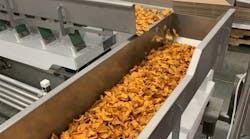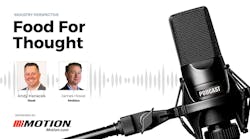Bruker Optics introduced its new Automated Solid Fat Content (SFC) Analyzer last month at the AOCS Annual Meeting and Expo in Salt Lake City, Utah.
Previously, the SFC method was a time consuming and laborious task. In particular, it was the operators responsibility to ensure a precise timing of the tempering procedures. With Brukers Automated SFC Analyzer, this operator dependence is a thing of the past. The samples are simply loaded into the Automated SFC Analyzer, and the system automatically conducts the whole procedure. All official as well as user-defined SFC methods (direct and indirect, parallel and serial) are offered to run even simultaneously on different samples.
The Automated SFC Analyzer is based on the minispec, Brukers bench-top TD-NMR system. Other essential components include Brukers certified SFC Calibration Samples, state-of-the-art robotics, temperature conditioning dry-blocks based on Peltier technology, as well as an Access-based front-end software. These all combine to provide the ultimate flexibility in SFC-method definition with secure, safe and unattended operation.
At the AOCS Expo, minispec product manager Wolfgang Burk stated: Bruker sets the pace again with its minispec Automated SFC Analyzer, providing the edible oils industry with the premium Quality Control (QC) equipment. The quantum leap in sample throughput meets the demands of the industry for improved time-to-market in a challenging business.
Bruker together with Unilever Research pioneered the SFC method in the 1970s. Since then, it has become the method of choice for characterization of fat compositions. QC at virtually every major edible oils processor relies on the SFC method. A series of national (AOCS) and international standards (ISO, IUPAC) have been released over the years which define the methods for different fat products.
The SFC method makes use of NMR technology, a form of spectroscopy that is well known in drug discovery, structural biology, and Magnetic Resonance Imaging (MRI). The principle of the SFC method is simple and easy to grasp; at a given temperature, some components of the fat composition are still solid while others are already melted. Therefore, the ratio between the liquid and solid fraction will be temperature-dependent and characteristic for the fat composition under consideration. The NMR properties of a melted and a solid fat differ drastically. Thus, the NMR response of the fat composition will report the "solid fraction" following calibration.




